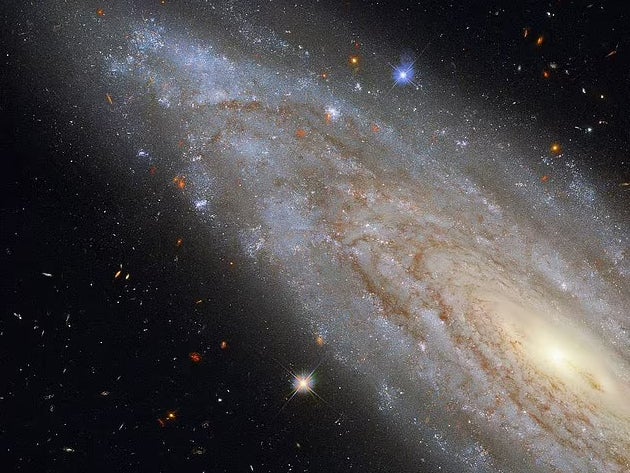NASA releases stunning picture of a Seyfert galaxy in deep space
Seyfert galaxies account for only 10 per cent of known galaxies

NASA has released a photo of a rare type of galaxy snapped by the Hubble Space Telescope.
The Seyfert galaxy type only accounts for 10 per cent of the galaxies in the known universe, but stand out for their galactic cores, which produce as much energy as all the other objects in the galaxy combined.
NASA classified Seyfert galaxies as "active galaxies”.
"For normal galaxies, we think of the total energy they emit as the sum of the emission from each of the stars found in the galaxy, but in active galaxies, this is not true. There is a great deal more emitted energy in active galaxies than there should be and this excess energy is found in the infrared, radio, UV, and X-ray regions of the electromagnetic spectrum," according to NASA. "The energy emitted by an active galaxy, AGN for short, is anything but normal."
The abnormally energetic cores are attributed to supernatural black holes sitting at their galactic cores.
Most galaxies have a supermassive black hole at their centre. The Milky Way is no different; the supermassive black hole Sagittarius A* sits at the centre of our home galaxy.
Unlike the Milky Way, however, active galaxies occur when the dense material – largely stars, gas and dust – found in galactic cores are consumed by the black holes. Angular momentum causes the material to spin into an accretion disk, which heats up due to friction and gravitational forces, producing unusual levels of energy.
Black holes in popular understanding are thought to be inescapable gravitational maws, consuming everything, including light, and stretch matter out in a process called "spaghettification", eventually tearing it apart. However, black holes also expend energy, which is expelled as both heat and light.
In addition to the rare galaxy captured in the photo, a bright blue spot can be seen near the top of the galaxy. This blue light is actually a supernova, or an exploding star. That supernova was first observed in 2019, but due to the distance the galaxy is from Earth, the star likely exploded 118 million years ago.
The galaxy in the photo released by NASA, NGC 3254, is approximately 118 million light-years from Earth. A light-year is approximately 6 trillion miles.
Though the galaxy is rare, it is not the only Seyfert galaxy the Hubble telescope has captured. The most recent was in 2016, when the telescope caught a picture of a galaxy that appeared to be a "twin" to the Milky Way galaxy.
NGC 3254 was first discovered in 1785 by astronomer William Herschel.
Join our commenting forum
Join thought-provoking conversations, follow other Independent readers and see their replies
Comments